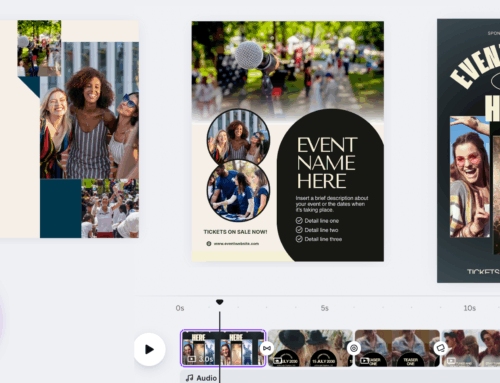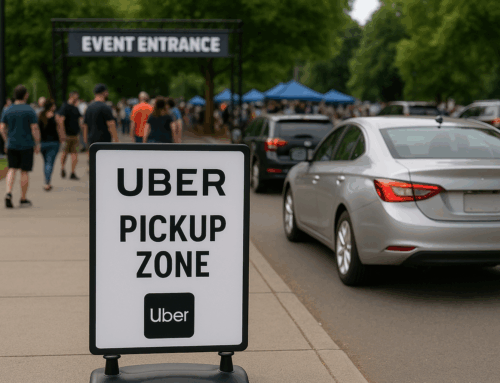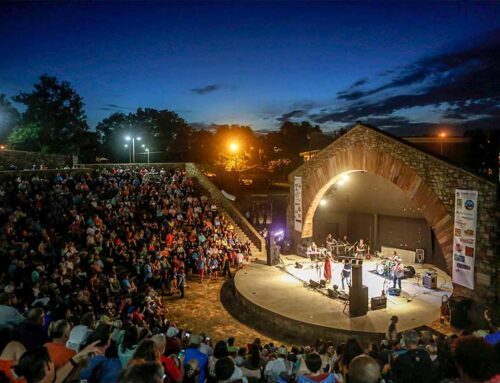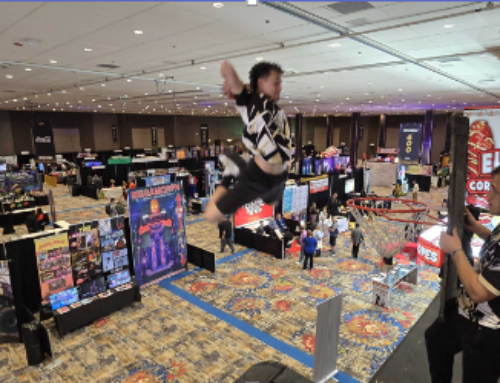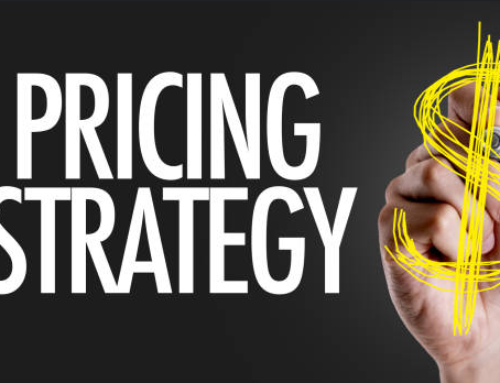Event sponsorship fuels most successful public events. Not only do sponsors fund a large portion of event budgets, but they can also assist with marketing. They can help amplify the event’s messaging through their own channels and platforms.
Finding the right brands to partner with your event is key. There is no one-size-fits-all when it comes to targeting ideal sponsors. You need to understand your audience and what you want from an event sponsor. Then target sponsors whose goals are compatible with those objectives.
In this guidebook, we will cover the following topics as it pertains to sponsorships for all kinds of events: live, hybrid, and virtual, festivals, fairs, expos, and trade shows. Be sure to bookmark this page so you can utilize it as a resource in the future!
- Definition of Event Sponsorships
- Assets and Activations
- The Process of Landing a Sponsorship
- Proper Proposal and Contracting
- Ensuring Fulfillment
- Debriefing Post Event
Learn how EventHub helps to increase partnership revenue and streamline sponsor/vendor management.
What is Event Sponsorship?
According to the Leadership Institute, “Event Sponsorship is a way of advertising your brand by ‘sponsoring’ or supporting an event financially in exchange for brand exposure to highly engaged attendees.” When done properly it can be a win-win for everyone involved. A brand can connect with its target audience in an engaging and unique way and an event can receive more funding.
A sponsorship deal can be event-based or more at the organizational level if you have multiple events. It truly depends on the brand’s goals and objectives when it comes to a sponsorship agreement. For some, they may want to set up a traveling activation that can be taken from event to event all year round. Event sponsorship can come in many forms so it’s important to understand your event organization and what companies would be a good fit to sponsor.
Exhibitors and vendors are also considered a sponsor because they rent a specified space to showcase their company. They pay the event for the perceived marketing value that it has for their business. Both typically pay for a small space at the event but could be sold additional sponsorship assets. The more value that an event presents to vendors or exhibitors, the more likely they are to invest more in the event and support it through strong activations and amplification.
Recently, virtual events grew in popularity. While they are nothing new, due to the COVID-19 pandemic they became even more critical since restrictions made most in-person events impossible. Facebook reported that the number of Facebook Live viewers in the US increased by up to 50% from February to March. Much like in-person events, virtual events present opportunities to involve sponsors.
What It Is Not
Sponsorship is not an initial investment in an event. The event should be happening regardless of whether or not it can find sponsors. Looking for a capital investment while the event is still in its idea stage means the event is looking for investors, not sponsors.
An event should know the basic details like date, location, type of event, and basic audience numbers before looking for sponsorships. Once those initial details are hammered out, more information like assets, audience demographics, photographs, and other marketing data should be gathered.
Assets and Activations
According to Eventbrite, “An asset is anything at your event available for sponsorship.” This includes naming rights, logo placement, digital marketing, complimentary passes, and other items that could hold value for a brand. This presents an excellent opportunity to evaluate your event to see if there are tweaks that can be done to add more value to sponsors.
Assets can be broken down into two main categories: physical and digital. A physical asset can be onsite like a stage name sign or off-site like a promotional campaign in a store. A digital asset can be anything from a social media post, a logo on a website, a mention in an email newsletter, or any other online impression. A sponsor can also choose to create an activation, which means they are given a physical space at the event to create whatever experience they desire. Activations can be as simple as a photo booth or as interactive and elaborate as breaking a World Record.
Creating an Asset List
Typically it’s more beneficial for both the brand and event to bundle multiple assets together and create a sponsorship package. Events can choose to create a sponsorship package that encompasses a mixture of physical and digital assets. These assets when put into this package then become the deliverables. Sponsorship deliverables are items that the event needs to make sure they follow through on, like putting up a banner or making a post on social media.
To start, it is helpful to make a list of all of an event’s assets. This is also considered its sponsorship inventory. When writing each item down you will want to think about how many of that item you can sell and the value of that item. Once you know all items you can think of written down, put them into categories. Then you can begin to group them together to make packages. Sponsorship add-ons, like social media posts or additional logo placement in addition to the main sponsorship asset, can help grow the total deal size.
The Process of Landing a Sponsor
The process of landing a sponsorship may not always be the same for every sponsor that is secured. However, in general, it involves the following activities:
- Determining your assets
- Creating a Media Kit
- Generating a list of Potential Sponsors
- Contacting Prospects and holding an Initial Call
- Sending and reviewing a proposal
- Signing the contract
Once you create an extensive asset list it is time to start working on the media kit. This is typically a PDF deck or a gated webpage. Sponsorship marketplaces like ours have also recently emerged as aggregators of event sponsorship inventory. Events can list their assets and packages on a marketplace and potential sponsors are matched with the right opportunities. On platforms like EventHub, each event publishes a “Showcase page” that serves as a one page, multi-media rich, and mobile-friendly media kit. By leveraging platforms like this, a small team can more effectively sell sponsorships by creating bandwidth to manage smaller partners in addition to major sponsors.
After the media kit has been created then it is time to start finding prospects. Slingshot Sponsorship’s top tip when it comes to prospecting is that “before starting to sell sponsorship, key research is undertaken and brands are targeted which align closely to the specific assets and have the best fit with the specific demographic.” Once you created a targeted list, then it’s time to begin outreach. Contacting potential sponsors can involve utilizing your existing network or cold calling/emailing.
Proper Proposal and Contracting
The initial call held with a prospect should just be an introductory call where you learn more about their goals and inform them about the event. This is a chance for them to review the introduction deck and ask questions. After this call, and only after, you want to send them a proposal. Sending a sponsor a proposal before you have had a chance to talk about their needs signals to them you are not interested in working specifically with them. In order for a partnership to be successful, both parties need to feel like they are receiving value every step of the way.
Hopefully, after a few meetings and an outstanding proposal, a sponsor is ready to sign a contract. When going into the contracting phase with a sponsor, employing a lawyer is a necessity. The contract is the best way to define all the deliverables that the sponsor expects from the event. It can also protect either party from any liabilities or changes to the agreement.
The COVID-19 pandemic presented a new set of problems for events selling sponsorships. Cancellations never occurred before in such massive quantities due to a global lockdown. Contracts and the fine details of them became extremely important during this time. Unfortaunley many events did not previously include a clause that covered cancellation due to a pandemic.
Green Cactus, a sponsorship agency, started adding on to the following to their Force Majeure Clause: “Notwithstanding the above parties have agreed that if the event is canceled because of COVID-19 the organizer agrees to refund the sponsor _____% of sponsorship fees.” Please keep in mind that this is just an example for informational purposes only and a lawyer should be consulted for all contracting matters.
Ensuring Fulfillment
Once a brand signs a contract the real work begins. The event must ensure that they deliver on what they promised. For some events, the person fulfilling the sponsorship deliverable may be different than the person who sold it. This is how things can fall through the cracks and be left unfulfilled.
Whether the event takes place in person or virtual, an event must ensure that all deliverables are met. Leveraging various technology and online tools is one way that events can ensure that their deliverables are met. Platforms like EventHub help events save up to 80% of previous time spent on managing partnerships through their online dashboards, required document management, and other paperless solutions. By utilizing these tools events can ensure that everything within the sponsorship contract is being fulfilled.
Debriefing Post Event
While this is sometimes overlooked by events, it is one of the most critical activities that an event can do. This is an opportunity for you to not only confirm the completion of all deliverables but showcase any added value. In order to prove that an event fulfilled all parts of the sponsorship contract, the team needs to collect data, photographs, and any other evidence of the sponsorship.
Even though you are not selling them directly on next year’s event, hosting a debriefing meeting is essential for maintaining a good relationship with the sponsor. The stronger the relationship then the more likely they are to return the following year. This meeting is also an important time to show how the event is trustworthy. This trust is what makes a sponsor want to return the following year.
Finding the right sponsor can have a major payoff for an event. The event can receive financial support while the brand is afforded the opportunity to market to an engaged audience. It starts with defining all the assets an event has and researching companies that would be a good fit. Leveraging an event marketplace can save time. It can also help a small team find and manage sponsors more efficiently. Once an event secures a partnership, it is important to ensure that the contract is thorough. It must list all requirements and account for any situation or disaster that may occur.
Then it’s time to deliver! Be sure to take photos, record statistics, and collect any other data the demonstrates completion of deliverables. Use this information during the debriefing meeting. Once that meeting is held then it’s time to start preparing to repeat the process all over again.

